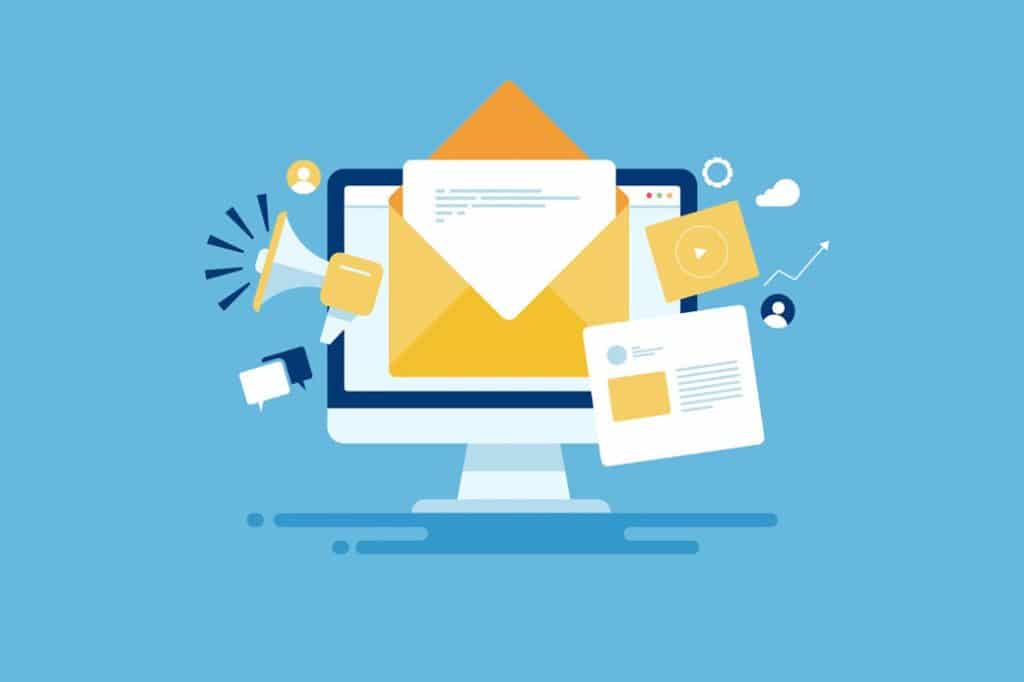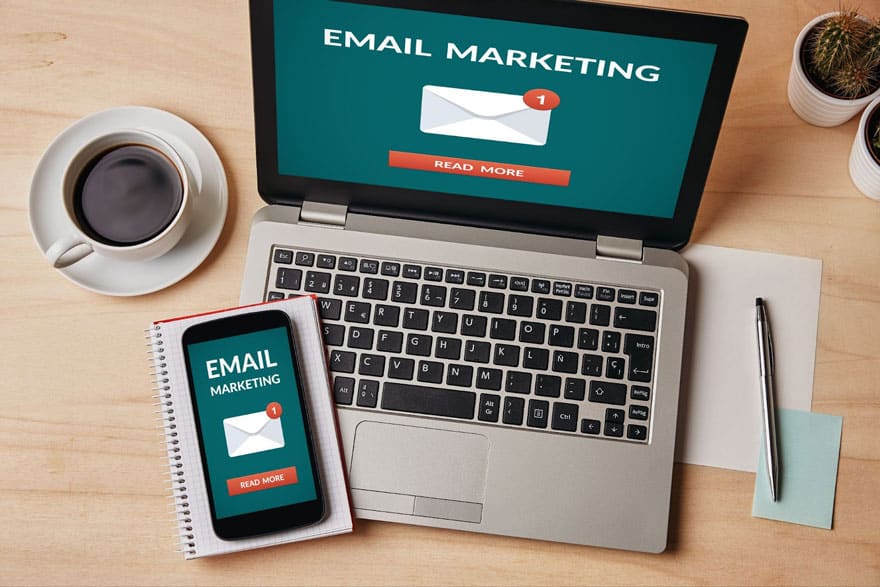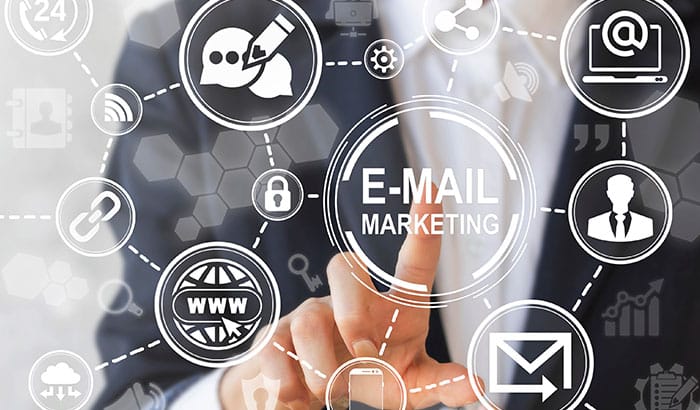Using email for marketing is a powerful tool for businesses of all sizes, allowing you to connect with your audience, build relationships, and drive sales and revenue. However, to be successful with email marketing, you need to do more than simply send out generic messages to your entire list.
Instead, you need to create targeted, personalized campaigns that speak directly to your subscribers’ interests and needs. And one of the most frequently asked questions is how often you should email your list with that content.
In this blog, we’re answering that question. Several factors are involved, all of which will help build your email list, keep your customers engaged, and improve click-through rates and conversions.
Whether you’re just getting started with email marketing or looking to take your campaigns to the next level, this guide will help you decide exactly how often to click “send” and how to avoid alienating your current lists while growing them at the same time.
Without further ado, let’s look at all the factors you should consider when emailing your list.
Factors to Consider for How Often You Should Email Your List
There isn’t a one-size-fits-all answer to how often you should send emails to your list. You should consider several factors to decide what’s right for your audience. Let’s take a closer look at those factors.
- Audience preferences: Understanding your audience’s preferences is crucial when deciding how often to email them because it directly affects their engagement with your emails.
If you send too many emails, your audience may become overwhelmed and unsubscribe or mark your emails as spam. On the other hand, if you don’t send enough emails, your audience may forget about your brand or lose interest.
By understanding your audience’s preferences, you can find the right balance between sending enough emails to keep them engaged without overwhelming them. You can also tailor your content and messaging to their preferences, increasing the likelihood of them opening and engaging with your emails.
- Type of content being sent: The kind of content being sent in your emails is another important factor to consider when deciding on your email sending frequency. The reason for this is that different types of content require different levels of frequency.
For example, if you’re sending promotional emails, send them sparingly, as they can come across as spammy and annoy your subscribers. On the other hand, if you’re sending a weekly newsletter with valuable content, your subscribers may look forward to receiving it and expect it on a regular basis.
Additionally, the type of content you’re sending can affect how relevant it is to your audience. You’ll want to ensure your content is relevant to your subscribers to keep them interested and engaged. This will help with open rates, click-through rates, and conversions.
So, it’s important to consider the type of content you’re sending when deciding on your email-sending frequency. By aligning the frequency with the kind of content, you can ensure that your emails are relevant, engaging, and valuable to your subscribers.
- Industry standards: Industry standards are important to consider when deciding on your email-sending frequency as they can provide a benchmark for what’s considered acceptable and effective in your industry. These standards can be based on research, data, and best practices established over time.
For example, some industries may have higher email-sending frequencies than others. A daily email newsletter may be more common in the news industry, while a monthly newsletter may be more common in the B2B industry.
Industry standards can help you stay competitive and relevant in your industry. If your competitors send emails more frequently than you, you may fall behind in engagement and conversions. We don’t want that!
On the other hand, if you send emails too frequently compared to your competitors, you may risk overwhelming your subscribers and causing them to unsubscribe. We don’t want that, either.
Understanding industry standards can help you make informed decisions about your email-sending frequency and ensure you stay competitive and effective in your industry. It’s ultimately all about balance.
- Business goals: Business goals can significantly impact how often you email your list. For example, if your goal is to increase sales, you may want to send more promotional emails to your subscribers.
On the other hand, if your goal is to establish your brand as an authority in your industry, you should focus more on sending educational content regularly. Studying your industry averages for email frequency can provide a solid place to start when deciding on your email-sending frequency.
Additionally, monitoring your email engagement metrics, such as open and click-through rates, is essential to see how your audience responds to your emails. This can help you adjust your email frequency to align with your business goals and audience’s preferences.
It’s important to consider your business goals when deciding on your email-sending frequency. By aligning your email frequency with your business goals, you can ensure your emails effectively achieve your objectives and provide value to your subscribers.

Best Practices for Sending Email Lists
Every industry has its “best practices,” which are guidelines, techniques, or standards widely accepted as effective or efficient in a particular industry or field. These practices have been developed over time through trial and error, research, and experience, and are considered the most effective way of achieving a particular goal or outcome.
Best practices are often used as a benchmark for evaluating performance and are regularly updated as new technologies, trends, or insights emerge. It might seem scary, but best practices are easy to keep up with once you’ve learned them.
In the context of email marketing, consistency, testing and analyzing results, providing value in every email, and segmenting your list are some of the best practices you can use. Let’s take a closer look.
- Consistency is key: Consistency is one of the most important best practices when it comes to email-sending frequency. Sending emails consistently helps you establish a routine with your subscribers, which can increase their engagement with your emails. When subscribers know when to expect your emails, they are more likely to open and engage with them.
Consistency can also help you build trust with your subscribers. If you send emails sporadically, your subscribers may become uncertain about your brand and lose interest. On the other hand, if you send emails consistently, your subscribers are more likely to see your brand as reliable and trustworthy.
Consistency can also help you maintain a healthy email list. If you send emails too frequently or infrequently, your subscribers may lose interest and unsubscribe. By sending emails consistently, you can ensure that your subscribers remain engaged with your brand and stay subscribed to your emails.
Consistency is key to building a strong relationship with your subscribers and ensuring the effectiveness of your email marketing efforts. Establishing a regular email-sending frequency can increase engagement, build trust, and maintain a healthy email list.
- Test and analyze results: Testing and analyzing results is a crucial best practice for email marketing because it allows you to optimize your email campaigns for better results.
By testing different elements of your email campaigns, such as subject lines, content, and call-to-actions, you can identify what works best for your audience and adjust your strategy accordingly.
Testing can help you understand your audience’s preferences and behaviors, informing your email-sending frequency, content, and messaging.
For example, you test different email-sending frequencies and find that your subscribers are more engaged with weekly emails. In that case, you can adjust your email-sending frequency to better align with their preferences.
Analyzing your email campaign results can also help you track your progress toward your business goals, such as increasing sales or website traffic.
By monitoring your email engagement metrics, such as open rates, click-through rates, and conversion rates, you can identify areas for improvement and adjust your strategy to achieve better results.
Testing and analyzing results is a best practice that can help you optimize your email campaigns for better engagement, conversions, and overall effectiveness.
By continuously testing and analyzing your email campaigns, you can stay ahead of the curve and ensure that your email marketing efforts deliver the best possible results for your business.
- Provide value in every email: Providing value in every email is an essential best practice in email marketing because it helps you build that trust and credibility with your subscribers that we’ve discussed.
Your subscribers are looking for content that is relevant, informative, and helpful to them. By providing value in every email, you can establish a strong relationship with your subscribers and keep them engaged with your brand.
Providing value can also help you stand out in a crowded inbox. If your emails consistently offer value to your subscribers, they are more likely to prioritize your emails over others that may not provide the same level of value. This can lead to higher open and click-through rates, ultimately leading to better conversions.
Providing value in every email can help you achieve your business goals. You can establish your brand as a trusted authority in your industry by delivering content that addresses your subscribers’ pain points and needs. This can lead to increased brand awareness, customer loyalty, and ultimately, better sales and revenue.
- Segment your list: Segmenting your email list is a valuable best practice because it allows you to deliver targeted content to specific groups of subscribers based on their interests, behaviors, and preferences. By segmenting your list, you can create more personalized and relevant email campaigns that are more likely to resonate with your subscribers.
Segmentation can help you improve your email engagement metrics, such as open rates and click-through rates, by delivering content tailored to your subscribers’ needs. By segmenting your list and delivering targeted content, you can keep your subscribers engaged and interested in your brand.
Segmentation can also help you track your progress toward your business goals by delivering content specifically designed to achieve those goals. For example, if your goal is to increase sales, you can segment your list based on past purchase behavior and deliver targeted promotional content to those subscribers.

Common Mistakes to Avoid With Your Email List
Just like there are best practices, there are also common mistakes you should avoid when emailing your list. Those mistakes include sending out irrelevant content, randomly sending emails, and not staying on top of engagement and metrics. Let’s take a closer look.
- Sending irrelevant content: Irrelevant content can quickly lead to disengagement and decreased effectiveness with your email campaigns. Sending content that’s not relevant to your subscriber’s interests might make them question why they signed up for emails in the first place. This will lead to lower open rates, click-through rates, and an overall less-effective email marketing strategy.
Sending irrelevant content can also damage your brand’s reputation. If your subscribers feel you are not delivering value or catering to their interests, they may view your brand negatively. This can lead to decreased trust and credibility, ultimately lowering sales and revenue.
Sending irrelevant content can lead to a decline in your email list quality. If your subscribers receive irrelevant content, they may unsubscribe from your list. This can lead to a smaller email list and a decrease in the effectiveness of your email marketing strategy.
- Not considering the time of day or week: When you send out your emails matters. Your customers will start to expect your email and will be more likely to click on it and engage with your content. Sending emails sporadically isn’t a good idea because your readers won’t know what to expect and won’t be able to prioritize opening your emails.
This can also help you stay consistent with sending emails out. If you know when you need to send the email, you’ll know when to create it so it goes out on time. This can help prevent your email list from getting to that point where it just doesn’t go out because you haven’t been able to get to it.
Additionally, sending emails at the same time and day every week can help you optimize your email send time. You can determine the best time and day to send your emails for maximum impact by analyzing engagement metrics such as open and click-through rates. This can help you improve the effectiveness of your email campaigns and drive better results over time.
- Not monitoring engagement metrics: Monitoring engagement metrics is crucial to the success of your email marketing campaigns because it helps you understand how your subscribers are interacting with your emails. By tracking metrics such as open rates, click-through rates, and conversion rates, you can gain valuable insights into what’s working and what’s not, and use this information to optimize your campaigns for better results.
Here are some reasons why monitoring engagement metrics is so important:
- It helps you measure the effectiveness of your campaigns: Engagement metrics provide a clear picture of how your subscribers respond to your emails. Tracking these metrics over time allows you to identify trends and patterns and use this information to make data-driven decisions about improving your campaigns.
- It helps you identify areas for improvement: Low engagement metrics can indicate areas where your campaigns may be falling short. For example, if your open rates are low, it may be a sign that your subject lines need to be more compelling. By identifying these areas, you can make targeted improvements to your campaigns to improve engagement.
- It helps you optimize your email send time: By analyzing engagement metrics, you can determine the best time and day to send your emails for maximum impact. This can help you improve the effectiveness of your campaigns and drive better results over time.
- It helps you better understand your audience: Engagement metrics can provide valuable insights into the preferences and behaviors of your subscribers. By understanding what types of content and offers resonate with your audience, you can create more targeted campaigns that are more likely to drive engagement and conversions.
Tips for Growing Your Email List
Of course, you naturally want to grow your email list to increase brand awareness, engage with your customers, and make sales. Here are some tips for growing your email list:
- Use lead magnets: Offer a valuable resource, such as an e-book, whitepaper, or exclusive content, in exchange for email sign-ups. This can incentivize people to join your email list.
- Optimize your website for email sign-ups: Make it easy for visitors to sign up for your email list by including sign-up forms on key pages, such as your homepage, blog, and about us pages.
- Leverage social media: Use social media to promote your email list and encourage followers to sign up. You can also use social media advertising to target specific audiences and drive sign-ups.
- Host events: Host events, such as webinars or in-person events, and require email sign-ups to attend. This can help you grow your email list while providing value to your audience.
- Use referral marketing: Encourage existing subscribers to refer their friends and colleagues to your email list by offering incentives, such as discounts or exclusive content.
- Partner with other businesses: Partner with other companies or organizations in your industry to cross-promote each other’s email lists. This can help you reach new audiences and grow your email list.
- Use pop-ups and overlays: Use pop-ups and overlays on your website to encourage visitors to sign up for your email list. Be sure to use these sparingly and avoid interrupting the user experience.
- Run contests or giveaways: Run contests or giveaways that require email sign-ups to enter. This can help incentivize people to join your email list while generating buzz and engagement.
Overall, growing your email list takes time and effort, but using these tips and strategies, you can build a high-quality email list that is engaged and responsive to your messages.
Tips for Personalizing Content
Feeling like you matter is a big deal in marketing, and personalizing content can really help with that. Here are some tips for creating personalized email content:
- Use dynamic content: Use dynamic content to automatically personalize your emails based on subscriber data, such as name, location, or past purchases. This can make your emails more engaging and relevant to each subscriber.
- Leverage behavioral data: Use data on subscriber behavior, such as website activity or past email engagement, to create personalized content that speaks directly to their interests and needs.
- Use personalization tokens: Use personalization tokens to automatically insert subscriber data, such as name or location, into your email content. This can help make your emails feel more personal and relevant.
- Use triggered emails: Use triggered emails to automatically send personalized messages based on subscriber behavior, such as abandoned cart emails or post-purchase follow-ups.
- Ask for feedback: Ask subscribers about their preferences and interests, and use this information to create more personalized content that resonates with them.
- Test and optimize: Test different personalization strategies and measure their impact on engagement and conversion rates. Use this data to optimize your personalization strategy over time.
Creating personalized content requires a deep understanding of your subscribers and their needs. You can make more engaging and effective email content that drives results by leveraging data and using targeted strategies.
Amp Up Your Email and Automation With REVITY
Email marketing is a powerful tool that can help businesses of all sizes connect with their audience, build relationships, and drive revenue. Following the best practices outlined in this blog can create effective and engaging campaigns that deliver results.
At Revity, we specialize in email marketing and automation and can help you take your campaigns to the next level. Whether you need help with email design, list segmentation, or automation workflows, our team of experts is here to help.
Contact Revity to learn more about how we can help you achieve your email marketing goals. Call us at 801.877.3362 or email us at info@gorevity.com to get started today!







